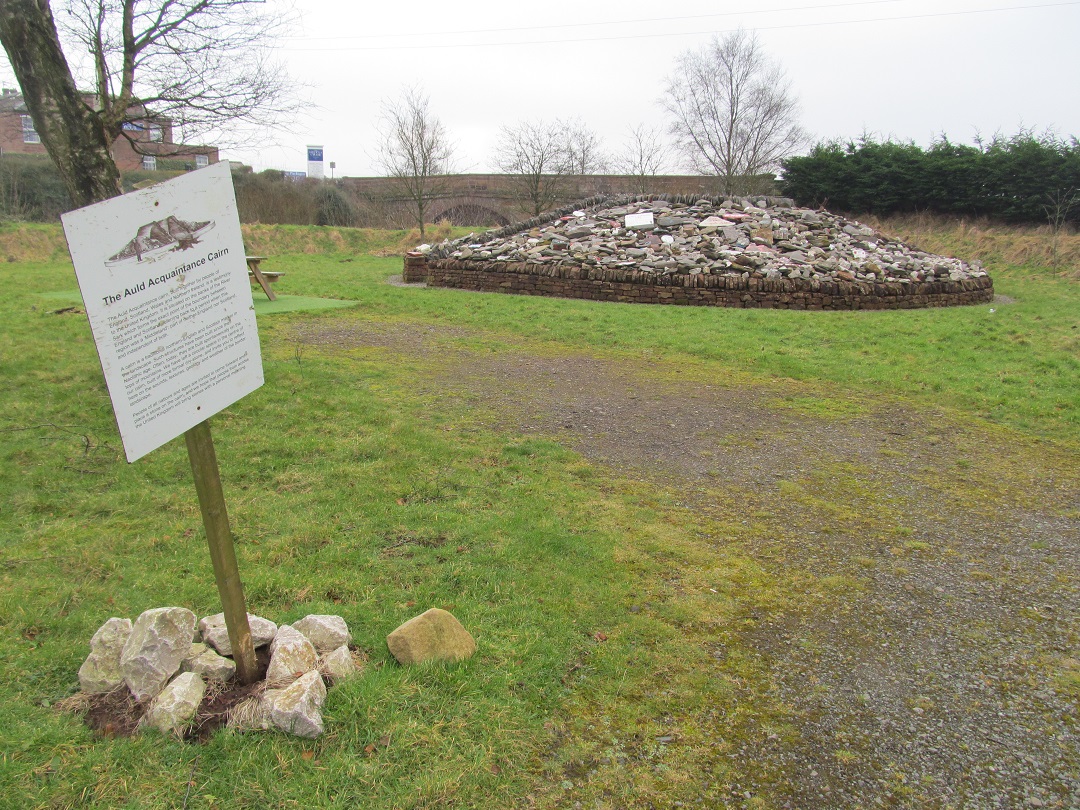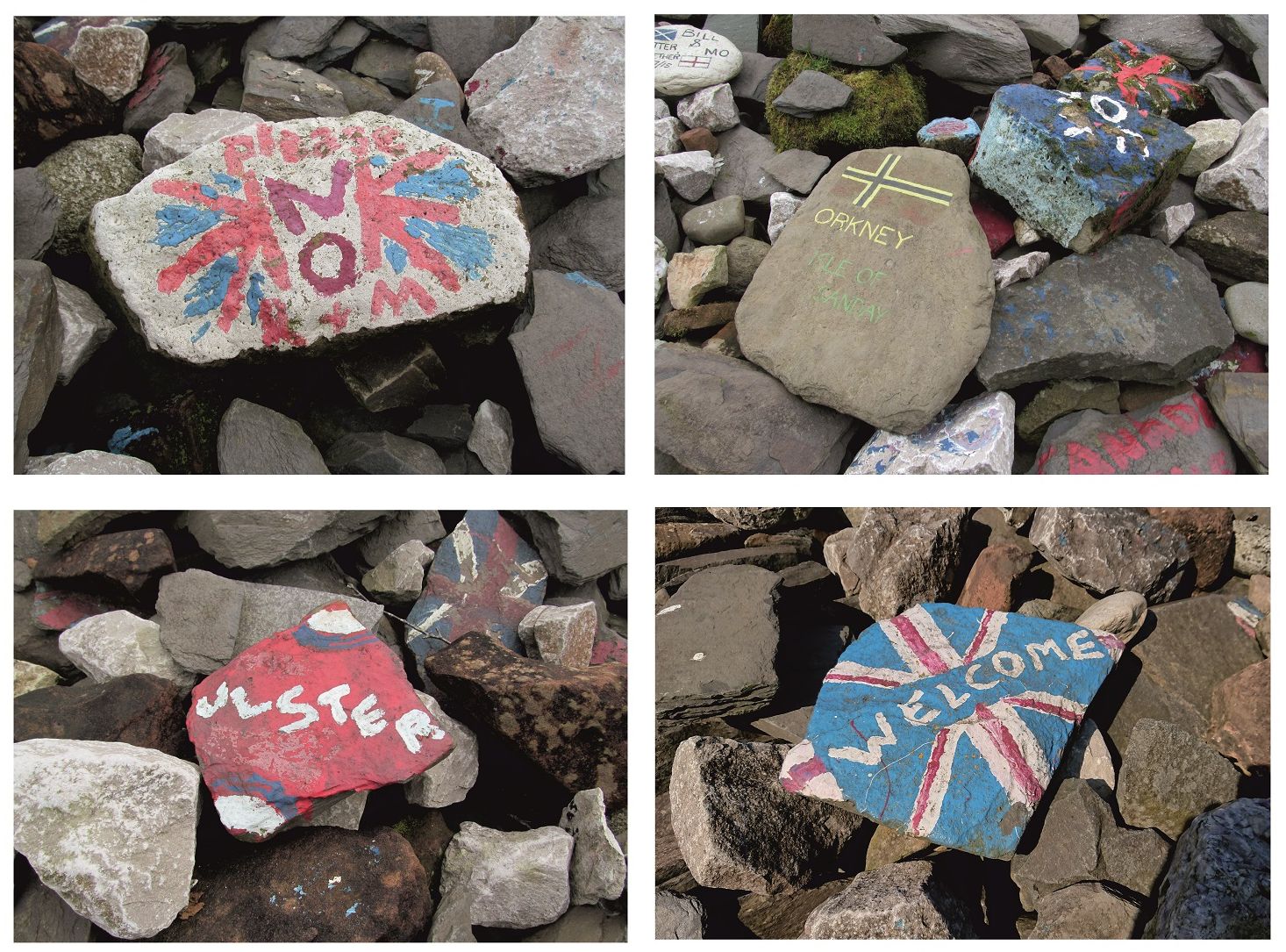New research into the use of prehistory in debates about Scottish independence published
Published: 6 December 2020
New book chapter by Kenny Brophy
The University of Glasgow’s Dr Kenny Brophy has been researching the ways that prehistory impacts on contemporary political debates in recent years. Perhaps the most surprising example in Scotland is the Auld Acquaintance Cairn in Gretna, just on the north side of the Scotland – England border. Dr Brophy’s research into this cairn has just been published in a book chapter entitled ‘Hands across the Border? Prehistory, cairns and Scotland’s 2014 independence referendum’. This chapter appears in a new book edited by Howard Williams, Pauline Clarke and Kieron Gleave called Public Archaeologies of Frontiers and Borderlands published by Archaeopress in November 2020 (available open access).

Brophy’s chapter explores the rationale behind the construction of a replica prehistoric stone cairn during the independence referendum in 2014 by former Conservative MP Rory Stewart, and the subsequent use and abuse of this cairn by supporters and opponents of independence. The research reported on has included repeat visits to the monument, documentation of painted stones placed on it, and changes through time.
The cairn has increasingly become a focal point for political protest and tension, even being brought into debates about Brexit. Brophy explores the perils of appropriating prehistory into contemporary politics and urges archaeologists to be more vigilant in pushing back against such misrepresentations. His chapter concludes,
“At a time when prehistoric monuments have become a focus for English nationalism, Brexit-related electioneering, and Neo-Nazi ceremonies, we should be vigilant about the uses and abuses of a cairn that was built to support British nationalism and is from time to time appropriated by Scottish nationalists.’”
In October 2020 Dr Brophy was interviewed about the cairn for an article that appeared in The Herald newspaper in a broader reflection of the way that archaeological narratives and sites have become part of debates on Scotland’s future. Here Brophy argued that, “The conflation of ancient and modern identities and motivations represented by the Auld Acquaintance cairn is problematic, precisely because it suggests that we should live our lives today, define our identities, vote in a democratic process, according to things that happened 500, 2000, even 5000 years ago”.
This research is part of the ethos of Engaged Archaeology that underpins the Archaeology subject area at the University of Glasgow and reflects research and practice that explores the social relevance and benefits of archaeology in Scotland and beyond.
First published: 6 December 2020
<< 2020

